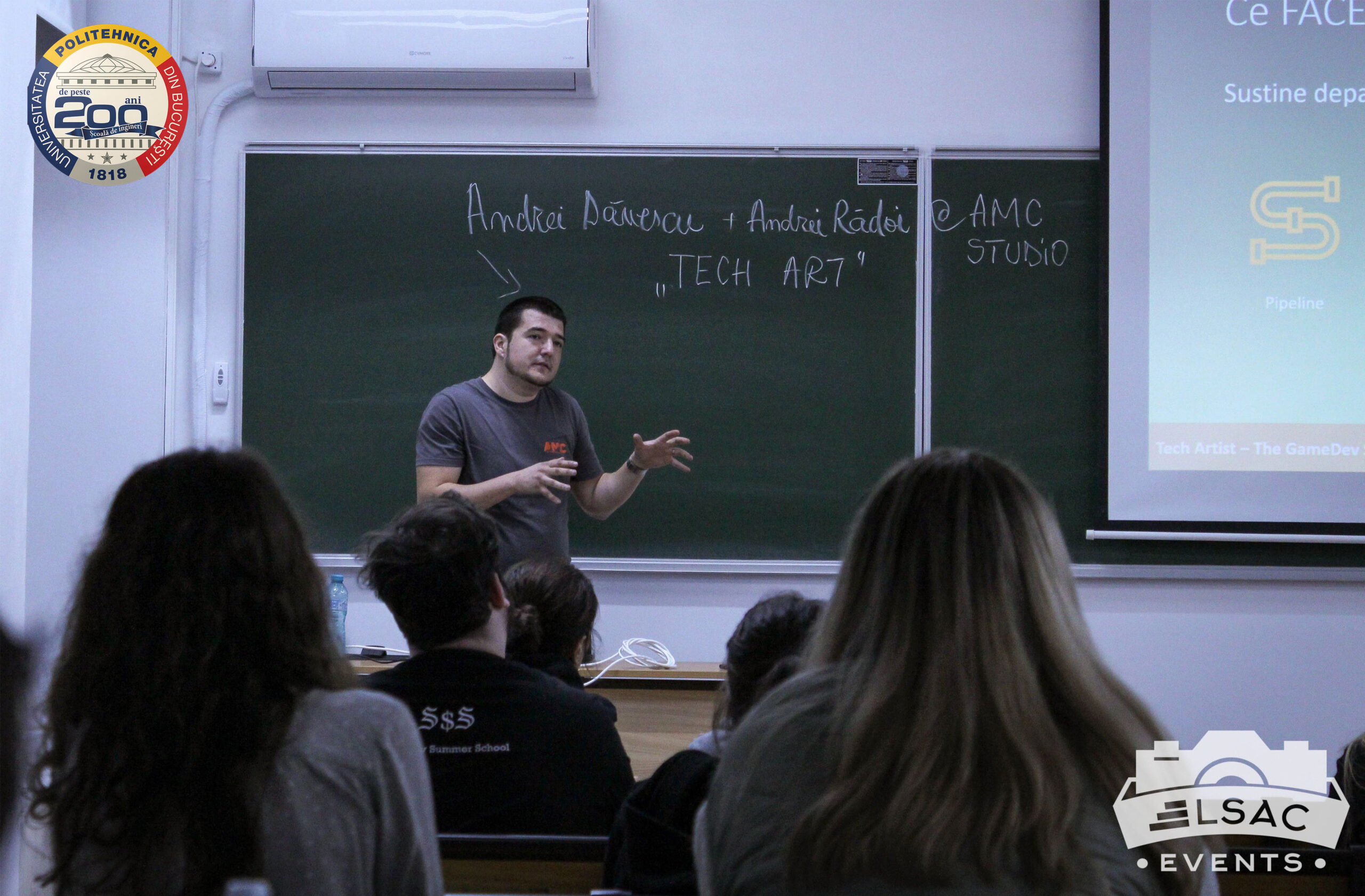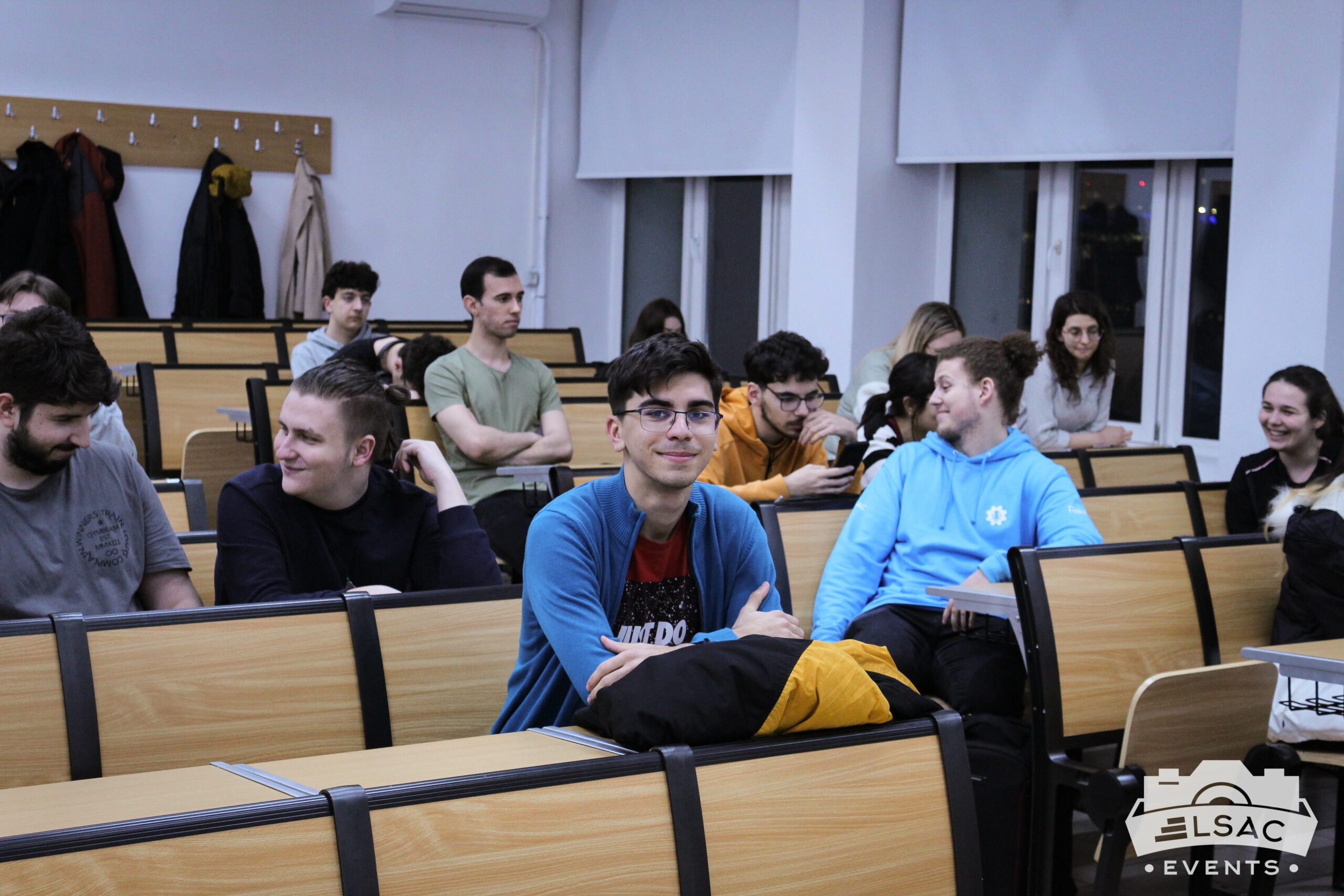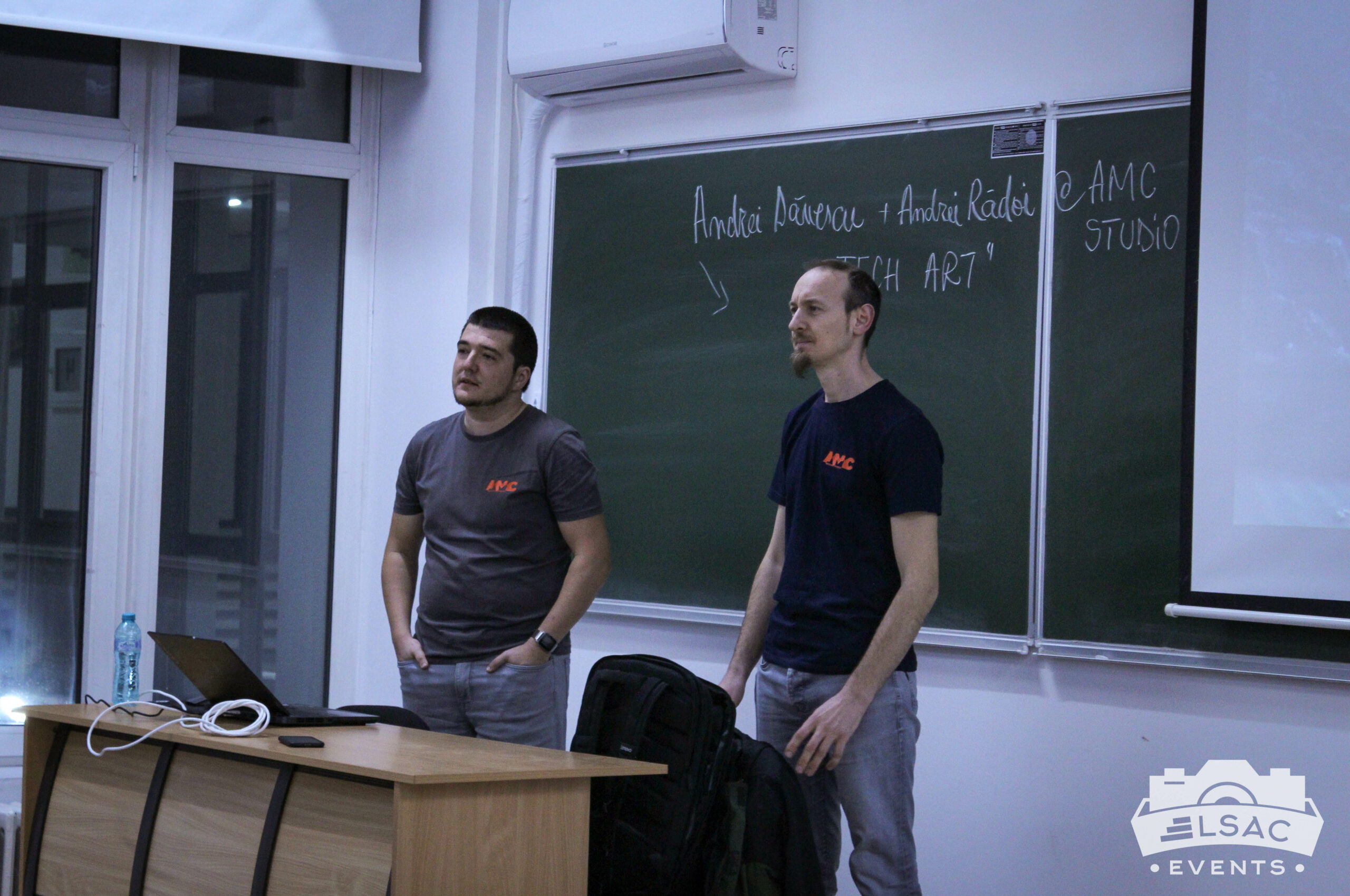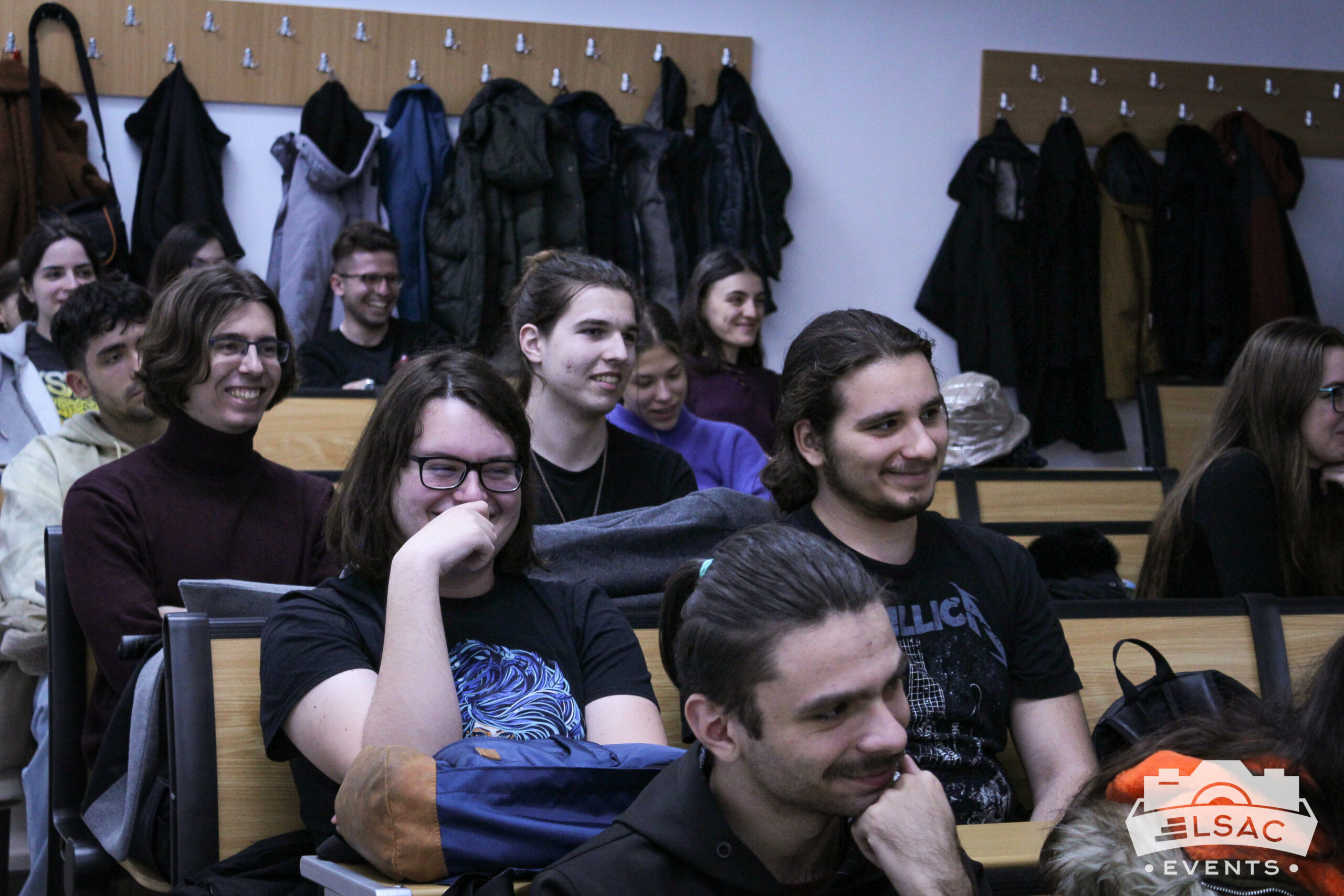Meetings with students are among the most nourishing experiences for AMC artists who want to contribute to the local community development.
Especially when you return to your own university, but this time in the role of the ‘alien at the lectern’. We were invited to contribute with insights from our world for the “Career Days” event, organized by the League of Politechnica Students to bring potential employers together with Poli students. This wasn’t our first interaction with this university; until last fall, we taught a 3D modeling course to master’s students in Automation and Computer science.
Following this experience, it became even clearer to us that the ideal profile of a Tech Artist can be found here, except for that of a modeler. Why? For all the reasons found below in this presentation, from which we extracted the main ideas, in clear terms, to satisfy the need for a quick understanding of the specifics of this profession, perhaps one of the most challenging in game development.
Andrei Danescu, head of the 3D department at AMC, returned to the Poli campus to unravel some mysteries to the students. He brought along a partner for the extensive Q&A, a Tech Artist in flesh & bones, Andrei Radoi, the titan in AMC whom colleagues would raise a statue to.
Cringe photos with them two in the campus:
What is a Tech Artist?
(of course we googled it so you don’t have to)
“A Tech Artist is someone who usually can’t draw much but can help you do it faster.”
“If you’re talking to an experienced 3D Artist about your work, and they ask you to stop because blood is dripping from their nose, you’re probably a TA.”
“Programmers with a penchant for 3D art, or artists who happen to like programming.”
What does a Tech Artist do?
Supports the Art department and serves as the bridge between Art <-> Engineering:
– Understands what a “healthy” creation pipeline looks like.
– Ensures that content creators have the necessary tools and support to do their job efficiently.
– Acts as the first line of defense in combating software errors.
– Advocates for upgrades in workflows and facilitates their adoption.
– Identifies bottlenecks in the pipeline and eliminates them as elegantly as possible.
Ensures the optimization of artistic content:
– They need to know what a performance-optimized asset looks like.
– They should be the guardian of best practices for creating and delivering content.
– They implement intuitive and easily manageable validation systems.
Resolves problems, documents solutions, and communicates effectively.
– The TA is a good problem solver, thinking about the implications of the problem and composing precise solutions with minimal secondary impact. They must be able to switch context quickly and with minimal effort.
– Implemented solutions are documented and presented in a way that is easily understandable by those who use them.
– The TA is in constant contact with the departments they support, constantly seeking to optimize workflows and improve the quality/time ratio. They possess advanced soft skills in communication and collaboration.
The need to KNOWs
A Tech Artist must be familiar with programming languages used in major content creation software.

They need to know how to use common content creation software, particularly off-the-shelf game engines.

They need to understand the main visual disciplines in game development:
Concepting, blockout, modeling, texturing, rigging & animation, VFX and particle systems, lighting, cameras, UI/UX.
Tech Artists cannot create tools or provide support if they do not understand the processes.
Specializations
Rigging:
– Mastery of best practices, familiarity with various rigging systems across different software packages.
– Proficiency in creating rigs for characters, props, and other assets.
– Ability to optimize rigs, reducing the elements required for operation while maintaining animation quality.
Backend:
– Proficiency in coding for game engines and standalone software.
– Familiarity with Digital Content Creation (DCC) and content integration tools.
– Maintenance and extension of the pipeline, refactoring to make it as streamlined as possible.
Shaders:
– VFX (Visual Effects) & Material/Effect shaders.
– Implementation of shader visualization & control by artists in DCC software.
– Performance control and optimization.
– GLSL (OpenGL Shading Language), HLSL (High-Level Shading Language), Shader Node Graphs.
– Adapting and building shaders for multiple platforms (PC, Console, Mobile, Portable, etc.).
– Documentation, debugging, and modification.
Asset Management:
– Creating versioning systems and integrating them into the pipeline.
– Creating and maintaining the database for resources and assets.
– Defining and maintaining organization conventions, naming conventions, etc.
Complex Programming:
– 3D math – vectors, matrices, dot product, quaternions, optimized shader math, etc.
– Manipulating SDKs to generate content or extend tools.
– Using complex software such as Houdini, Thinking Particles, tY Flow, or others dedicated to specific tasks like SpeedTree, WorldMachine, etc.
AI:
– Materials – upscaling, generative content.
– 2D concept – image generation prompts.
– World building – prompt-based large-scale asset population.
– Animation – crowd control.
The Why
– Tony Stark or McGyver were amongst your role models.
– With enough experience in the field, there’s no question a TA can’t answer with “I don’t know,” but rather “how comprehensive should the answer be?”
– Multifaceted Experience, synapses spread in all directions allowing for educated guesses.
– Very high versatility in adapting to various roles.
– Impossible to get bored, rapid context-switching is the modus vivendi for a TA.
– Low risk of layoff (considering adequate performance), everyone wants a capable TA in the team, they’re like unicorns.
– High potential for relocation, you can easily switch studios due to the ability to fill skill needs in many areas.
– Loved by all, everyone loves a TA because they either make life easier or get them out of a jam.
– Always able to specialize, a TA can always commit to a specific domain.
The Challenges
– High initial investment: Requires absorbing a large amount of information and applied training.
– Lack of formal education for Tech Art: The profession must be pieced together from wherever available, often self-taught.
– Limited resources for guidance: In some situations, there may be no one to turn to for advice.
– Stigma of being a “Jack of all trades, master of none.”
– Debugging may become a way of life depending on the context.
– Introverts may face difficulties due to the collaborative nature of the role.
– Often working behind the scenes.
– Some studios may allocate only one slot for a Tech Artist per specialization.









